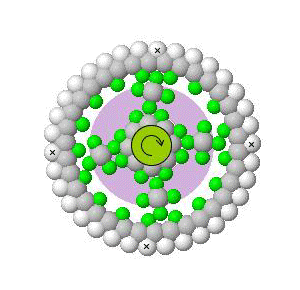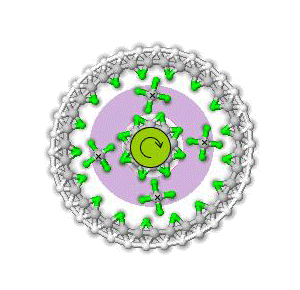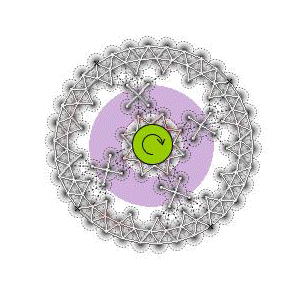- When Input=S, Output=C, Stationary=R, gear ratio = 1 + r / s;
- When Input=S, Output=R, Stationary=C, gear ratio = - r / s;
- When Input=C, Output=R, Stationary=S, gear ratio = r / ( r + s );
Are the above formulas also applicable to molecular planetary gearsets? Check it out yourself with a hypothetical molecular planetary gearset shown below. More broadly, what problems will we encounter when we apply the concepts from mechanical engineering to molecular nanotechnology?
 |
 |
| Case 1: Van der Waals (VDW) spacefilling display mode | Case 2: Ball-and-stick display mode |
 |
 |
| Case 3: Stick display mode | Case 1: Wireframe display mode, VDW shading, VDW lines and kinetic energy shading |
 |
 |
| Case 3: Denaulay triangulation mode | Case 2: Spacefilling and kinetic energy shading mode |
The above images are just animated gif files recorded from molecular dynamics simulations using the Molecular Workbench software (molecular views powered by Jmol). Click the above button or this link to launch the real model with MW.